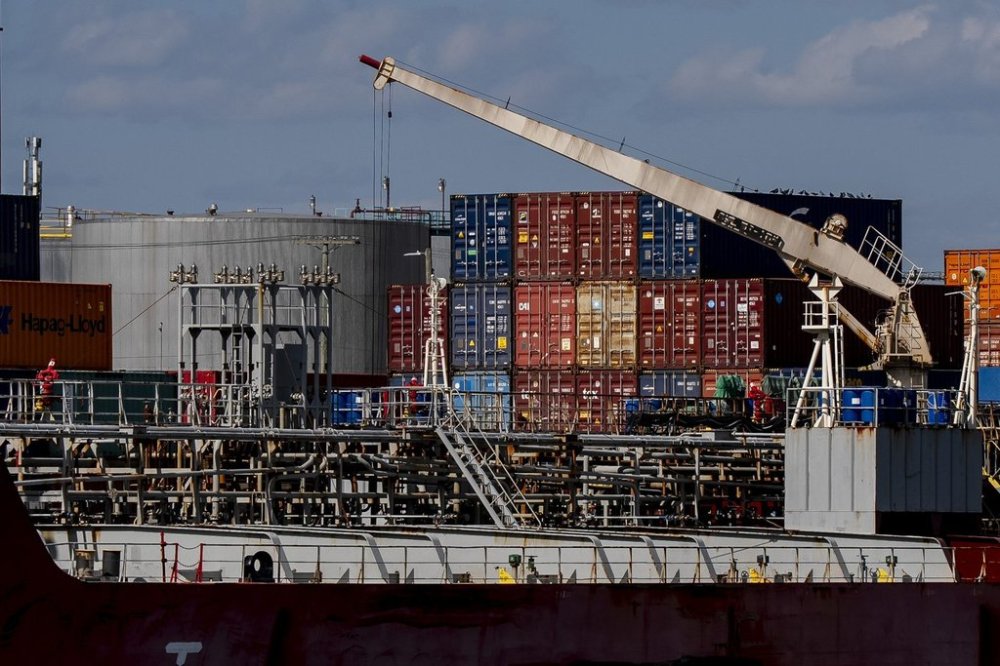Canada must ramp up container shipments at smaller ports: trade group
Advertisement
Read this article for free:
or
Already have an account? Log in here »
To continue reading, please subscribe:
Monthly Digital Subscription
$1 per week for 24 weeks*
- Enjoy unlimited reading on winnipegfreepress.com
- Read the E-Edition, our digital replica newspaper
- Access News Break, our award-winning app
- Play interactive puzzles
*Billed as $4.00 plus GST every four weeks. After 24 weeks, price increases to the regular rate of $19.00 plus GST every four weeks. Offer available to new and qualified returning subscribers only. Cancel any time.
Monthly Digital Subscription
$4.75/week*
- Enjoy unlimited reading on winnipegfreepress.com
- Read the E-Edition, our digital replica newspaper
- Access News Break, our award-winning app
- Play interactive puzzles
*Billed as $19 plus GST every four weeks. Cancel any time.
To continue reading, please subscribe:
Add Free Press access to your Brandon Sun subscription for only an additional
$1 for the first 4 weeks*
*Your next subscription payment will increase by $1.00 and you will be charged $16.99 plus GST for four weeks. After four weeks, your payment will increase to $23.99 plus GST every four weeks.
Read unlimited articles for free today:
or
Already have an account? Log in here »
MONTREAL – The Chamber of Marine Commerce has called on Ottawa to allow international containers into smaller ports by bolstering customs clearance on the docks.
Adding customs facilities to six ports on the St. Lawrence Seaway and Great Lakes would improve shipping efficiency, cut truck congestion and reduce reliance on the United States, according to the industry group.
Currently, just five ports across the country — Halifax, Saint John, N.B., Montreal, Vancouver and Prince Rupert, B.C. — have Canada Border Services Agency officers on hand to inspect some of the millions of international shipping containers that arrive by boat.

A chamber-commissioned study by Aviseo Conseil found that outfitting the half-dozen inland ports with customs processing would ease supply chain challenges and generate $132 million in business income each year.
Maguessa Morel-Laforce, the group’s government relations director, said international container traffic would yield benefits for sectors ranging from electric vehicle battery production near Windsor, Ont., to larger-scale container shipping in Quebec City, where the deepsea port depth can handle larger vessels.
“Then you have ‘intralake,’ a market that can happen as well. You’re looking at Chicago and Toronto, the third- and fourth- largest agglomerations in North America,” he said in a phone interview. “Thousands of trips every week happen there.”
The push to boost CBSA capacity and container shipments comes after a similar demand last month from cities along the Great Lakes and St. Lawrence, whose mayors argued that Canada lost out on revenue and jobs due to the four customs-equipped American ports along the route, versus one — Montreal’s — north of the border.
In a joint letter, municipal leaders from Montreal to St. Catharines, Ont., said the imbalance was weakening the region’s role as a competitive maritime hub, with the seaway operating at just 50 per cent capacity. The vast majority of the cargo is made up of bulk goods such as iron ore, grain and cement rather than containers, which carry everything from consumer electronics to kitchen utensils.
“We see containers pass by in the St. Lawrence Seaway and on to the Great Lakes and reach these American ports because the U.S. customs agency has approved the arrival of those, containers. So there’s definitely a market for it,” Morel-Laforce said.
Four of the Canadian ports cited by the chamber are in Ontario — Hamilton, Windsor, Goderich and Picton — with the two others in Quebec City and Valleyfield, west of Montreal.
Valleyfield hosted customs officers until recently, but the CBSA pulled out of the port last year.
Prime Minister Mark Carney said last month he wants to fast-track expansion of the Port of Montreal, one of five major infrastructure projects green-lit by the federal government.
In an email, the CBSA said it was open to requests for an enhanced role.
“The CBSA is committed to working with stakeholders to examine options and consider proposals for the expansion of services,” said agency spokesman Luke Reimer.
This report by The Canadian Press was first published Oct. 22, 2025.

